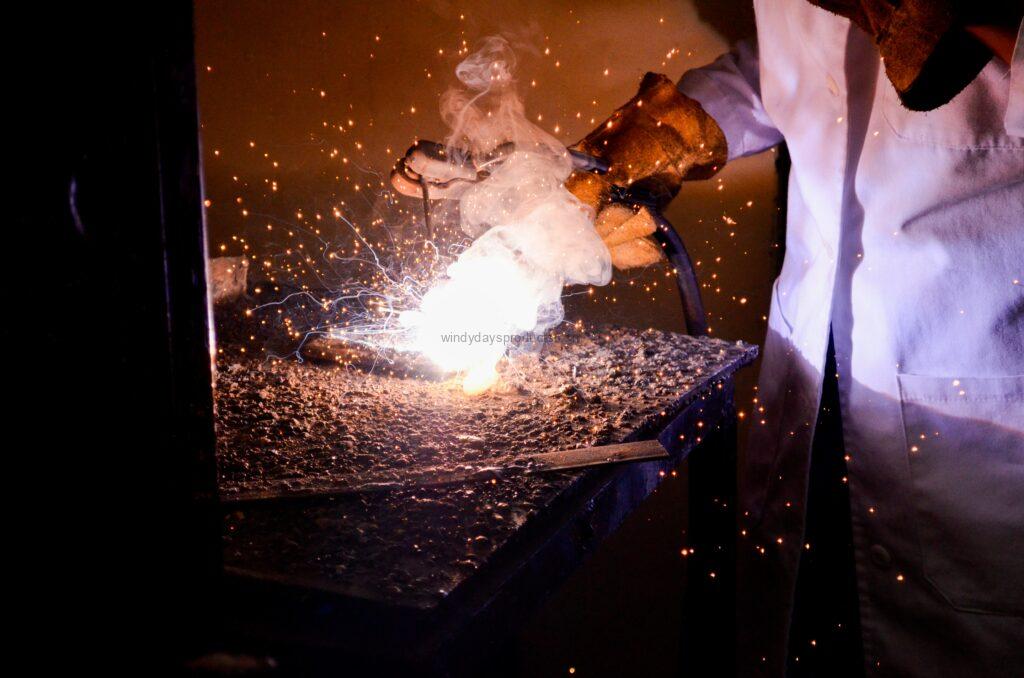Welding Process.
What Is Welding?
It´s the process of fusing two parts or pieces together using heat and/or pressure to create a joint. This resulting joint may also be called a seam or weldment. To create the seam, welding uses intense heat to melt the filler metal and the original metal together while being protected by a shielding arc created by gas that’s specific to the type of welding machine used.
Types of Welders
To create the heat necessary to melt various compounds together to create a seam, a welding machine is necessary. The most common types of welders are stick, MIG/flux-cored and TIG. Although you may also find plasma arc, gas tungsten arc, atomic hydrogen and energy beam units, these are typically reserved for highly skilled professionals. The core models are more than sufficient for the novice welder.
Welding Process: Understanding Equipment Types
Take a look at these standard types of equipment and learn about different types of welding to see which would be the best welder for your projects.
Stick Welders (SMAW or Shielded Metal Arc Welding)
Economical and effective, stick welding is the most popular choice for home shops. It works both in the workshop and outside, produces strong welds, and works on most alloy metals — even dirty or rusty surfaces. Stick welders can pose a challenge, however. Finished welds must be cleaned.
MIG Welders (GMAW or Gas Metal Arc Welding)
MIG (metal inert gas) welding is an excellent choice for beginning welders. This easy-to-handle machine is usually spool-fed to create professional-looking joints on both thick and thin metals. MIG welding requires separate shielding gas but doesn’t require chipping and cleaning slag as the stick welding process can. This makes for a faster and easier welding experience.
Flux Arc Welders
A flux arc welder offers simple and efficient welding on steel, aluminum and stainless steel. Some flux-core wires shield the arc from contamination without the need for an additional shielding gas. This feature makes a flux-cored welder an excellent choice for outdoor use as it works effectively on dirty or rusty metals, creating a thick, reliable seam.
TIG Welders (GTAW or Gas Tungsten Arc Welding)
TIG (tungsten inert gas) welding is a bit more complex to learn but offers a level of precision that other welding machines can’t. TIG welders require shielding gas but offer greater control and the ability to fine-tune the current with the use of an amperage foot pedal. TIG welding is good for thin alloy steel, aluminum, magnesium and copper alloys.
Multi-Process Welders
If you want to take advantage of several different types of welding but lack the space to store multiple welding machines, a multi-process welder may be your best choice. Housing several different processes inside a single machine, this equipment combines multiple functions, like MIG/flux-cored, TIG and stick welding, in a single unit.
Welding Process: Buying Your First Welder
There’s no welder that’s perfect for every craftsperson. That’s why it’s important to understand your task, goals and budget.
Research your workload and determine the types of metal you’ll most often work with, as well as their thickness. For example, are you primarily working to fix cars? Create metal sculptures? Build backyard furniture? Or are you performing maintenance on heavy-duty farm equipment?
Don’t just stop with your first project. You may need to repair a metal fence this weekend, but try to also see what’s down the road. Have you wanted to add a spare-tire mount to your trailer and didn’t know where to start? This helps to give you an idea of the type of machine and amount of training you’ll need to be successful.
Maintaining a Healthy Respect for Your Welder
As with all power tools, safely using a welder requires a healthy respect for the welding equipment. The correct safety gear and equipment will protect you against many things, but be aware of the risk of electric shock, noise hazards, burns, exposure to UV (ultraviolet) and IR (infrared) radiation, as well as fumes and gases.
That’s why it’s essential to save part of your budget for the right welding safety and protective gear. Your welding machine documentation will tell you what you need. For example, look for:
- A quality welding jacket
- Light- and heavy-duty welding gloves
- A welding hood or welding helmet with the appropriate lens for your machine
- A welding cap
- Several pairs of safety glasses
- Steel – toe shoes
- Earplugs
Reliable fume extraction solutions should also be part of your safety gear shopping list and budget.
Learning a new skill can be both exciting and overwhelming. Remember to take your time, learn as much as possible about your equipment and practice your new craft often. You’re well on your way to adding a skill with a great payoff — whether you’re working at home or on the jobsite.
Caution: Follow the welding equipment manufacturer’s instructions for use and safety, including the use of welding safety equipment and other safety gear
Santiago Martinez – www.windydaysproducts.com


I rally need to learn how to weld. Please post more about this. Regards , Albo
Yes i Will. Thanks
Excellent stuff. Just what I need for my son school project
Excelente articulo.
Felicitaciones